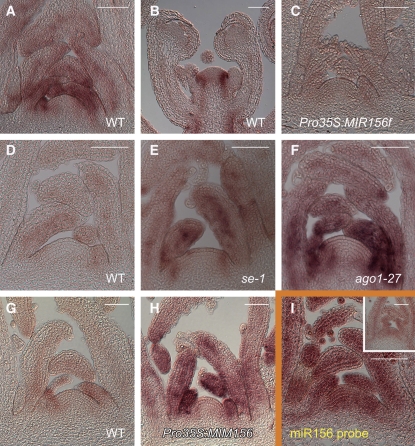Figure 3.
In Situ Hybridizations Showing Expression Patterns of SPL9 and miR156.
(A) to (H) Expression of SPL9.
(A) and (B) Wild-type vegetative (A) and reproductive shoot apex (B).
(C) Pro35S:MIR156f vegetative shoot apex.
(D) to (F) Wild-type, se-1, and ago1-27 vegetative shoot apices. All three samples were stained for the same amount of time in the dark. The wild type was allowed to remain underdeveloped so that the stronger signals in the other two genotypes would not become saturated.
(G) and (H) Wild-type and Pro35S:MIM156 vegetative apices. Both samples were stained for the same amount of time in the dark. The wild type was allowed to remain underdeveloped so that the stronger signal in the Pro35S:MIM156 apex would not become saturated.
(I) Expression of miR156 in the wild type and se-1 (inset).
Shoot apices were dissected from 15-d-old plants grown in short days. Bars = 50 μm.

